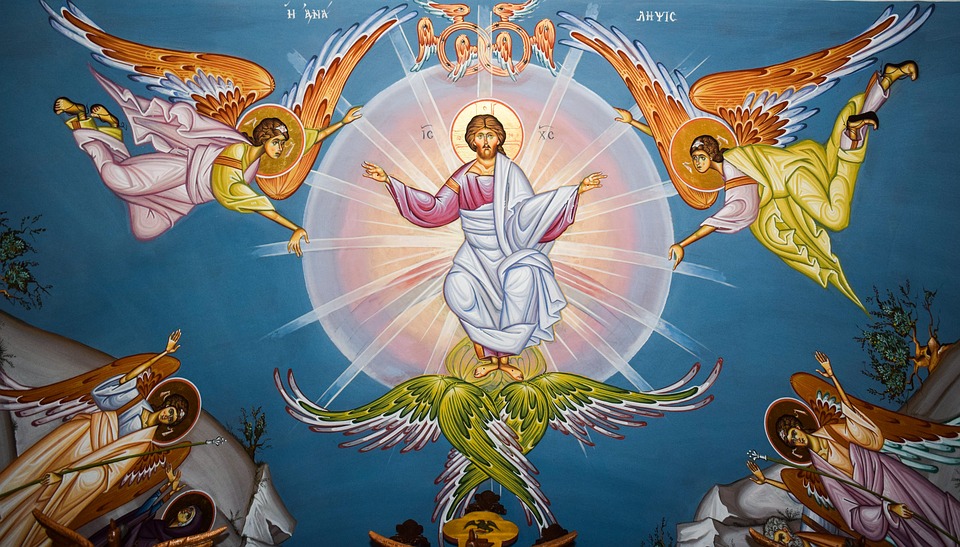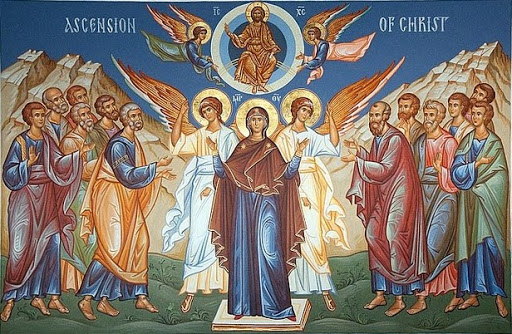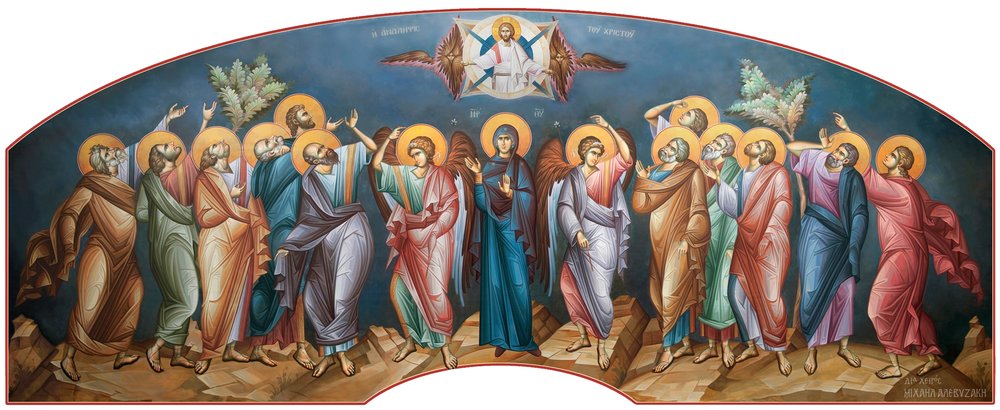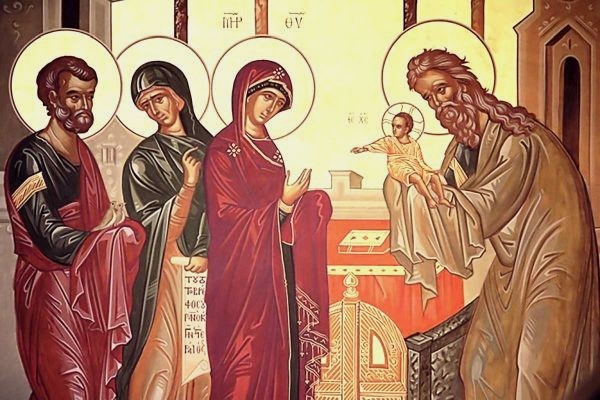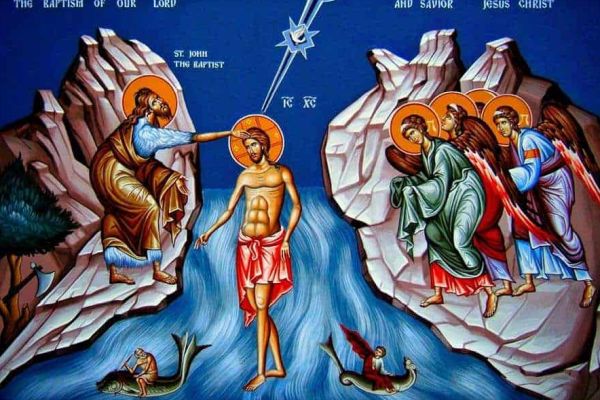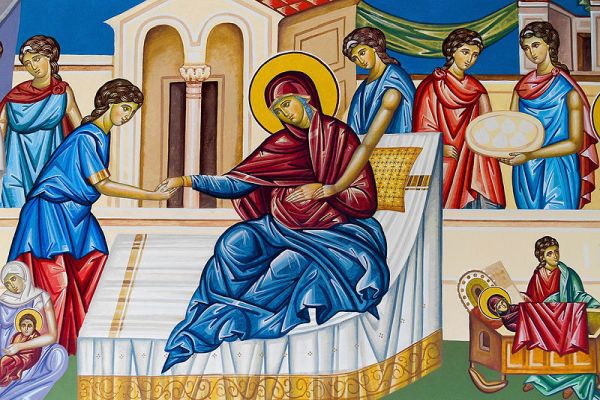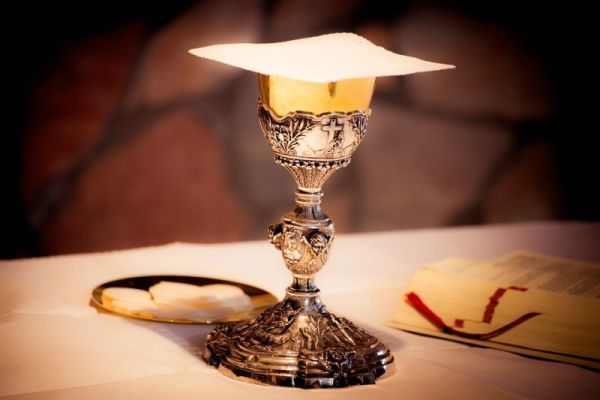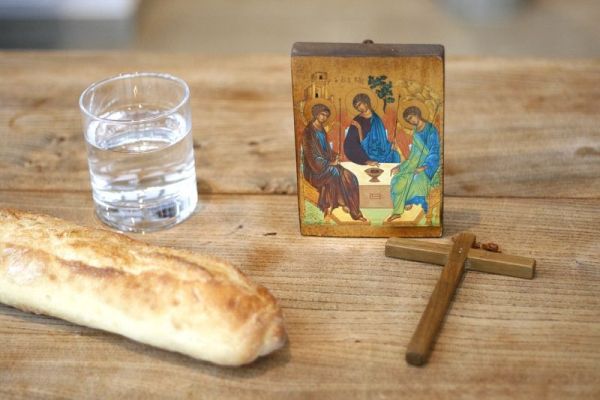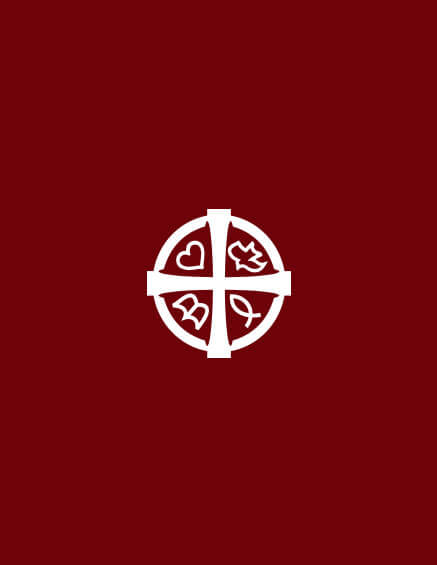The Feast of the Ascension
The Feast of the Ascension of Christ commemorates the ascension of our Lord Jesus Christ into heaven. This is one of the 12 great feasts of the Orthodox liturgical year1.
Date: This feast is celebrated on the fortieth day2 after Easter, because according to St. Luke’s account in Acts 1:3, our Lord Jesus Christ ascended into heaven after spending 40 days with His disciples after His resurrection. The traditions of the Church also place Mount Olivet3 near Bethany4 as the place from where our Lord ascended.
The event
After His Resurrection from the dead on Easter Sunday, the Lord Jesus spent forty days on earth, appearing continually in various places to His disciples, with whom He also spoke, ate, and drank, thereby further demonstrating the reality of His Resurrection.
Then on the fortieth day, He appeared to them again in Jerusalem. After He had first spoken to the disciples about many things, He gave them His last commandment – to go forth and proclaim His Name to all nations5. But He also commanded them to first to wait until they received the power of the Holy Spirit before beginning their ministry.
After these things, He led them to the Mount of Olives, and blessed them. After that He ascended into heaven in their sight, into a cloud. St. Mark records that “He was received up into heaven, and sat down at the right hand of God”6. And as the disciples continued to gaze upward, suddenly two Angels in the form of men in white raiment appeared to them and said, “Ye men of Galilee, why stand ye gazing up into Heaven? This same Jesus, Who is taken up from you into Heaven, shall so come in like manner as ye have seen Him go into Heaven”7. After this, the disciples returned to Jerusalem, and began spending time in prayer, waiting obediently for the promise of the Holy Spirit.
Significance of the Ascension Event
– Climax of the earthly life of Christ – The ascension of Christ is His final physical departure from this world after the resurrection. It is the formal completion of His mission in this world as the Messianic Savior. It is His glorious return to the Father Who had sent Him into the world to accomplish the work that He had given him to do. (Jn 17:4–5)
– Proof of the Resurrection: The Ascension event is very important for our faith because it reminds us of the reality of the Resurrection. The Lord Jesus Christ did not simply leave His disciples and ascend into heaven after His resurrection. The Book of Acts tells us that He was with His disciples for 40 days, proving the reality of His death by showing them His scars, and His Resurrection by eating and drinking with them.
–Further Proof of the Deity of Christ – The ascension of Christ was His enthronement in the fullness of divine authority and glory. His taking up into heaven was seen by so many witnesses, and after a while the first martyr Stephen also saw Christ standing at the right hand of God the Father (Acts 7:55). That is why in the Nicene Creed, the Church declares that “Christ ascended into heaven and is seated at the right hand of God the Father”. It is also to be noted that others like Enoch and Elijah had been taken into heaven in the past, but the Scriptures teach us that Christ ascended by the power of God8, which is further proof of His divinity as God the Son.
–Source of Apostolic Traditions – In addition to this, the Lord Jesus Christ taught them various more things during those 40 days, about the fulfillment of the Old Testament prophecies regarding Him9, preparing them to lead His church and feed His sheep. None of the things have been written down in the Canon of Scripture. But it is believed that the Apostles passed on these teachings to their followers in the form of church traditions. That is why we hold church tradition as sacred.
–Prelude to Pentecost – In all of the Ascension narratives, one of the most common things recorded is the Lord Jesus’ final bidding to the Apostles – to wait for the promise of the Holy Spirit. Because this would fill them with the ‘power from on high’ that would enable them to carry out the mission of spreading the faith to the ends of the earth. And this event did happen, ten days later during the feast of the Pentecost. So in the Ascension, while the Lord Jesus departs from the disciples, they are not sad but filled with joy because they know that His presence will continue to be with them always through the gift of the Holy Spirit.
The Icon of the Feast
The Icons of the Ascension usually consist of two parts. The top part depicts the Lord Jesus Christ seated in heaven with the angels around Him, and the bottom part shows His disciples on earth watching the Ascension event taking place. The landscape is filled with trees, representing the Mount of Olives, where the event is said to have taken place.
In heaven, Christ is shown seated inside the mandorla (representing the uncreated and divine glory of God) blessing all below with His right hand and holding a scroll in His life. This signifies that the Lord is the source of all blessing and knowledge. At the bottom, along with the apostles stand the two angels (who have halos) who had told the Apostles that Christ would come the same way He ascended.
Though there were only supposed to be eleven disciples during this event, the icons usually show 12 disciples along with the Theotokos. The reason for including the Theotokos is because she represents the entire Church who is patiently waiting for the return of Christ. The 12th disciple shown here is not Judas Iscariot but St. Paul10, who was numbered along with the Apostles, who are the foundation of the Church.
The uniqueness of the Ascension Icons is in the depiction of Christ Himself. His position is always shown in such a manner that it cannot be ascertained as to whether He is ascending or descending. And this was deliberately done to remind us, as the Angels foretold, of His Second Coming, that He would come again “in the same manner as you have seen Him go up into heaven”. The throne on which Christ sits, represents the Judgment throne, and reminds us that Christ will come again to judge the living and the dead.
Observation of the Feast
The liturgies of the Feast of the Ascension are very similar to the Easter liturgies. Even the beginning greetings is similar – “Christ is risen and ascended into glory”. As most of the Holy feasts of the Church, we celebrate this feast with the Eucharist. The readings from the Old Testament all reflect about the New Covenant that God is going to make with His people. The Gospel readings are taken from the Ascension narratives in Matthew 28, Mark 16 and Luke 24. Acts 1:1-11 is also part of the selected readings.
Theology of the Ascension
The Ascension of Christ is very significant for us Christians for a number of reasons.
1. Humanity has been brought to divinity – When Christ ascended into heaven, He did so as a human, not as a spirit. His humanity was proved through those 40 days when He ate and drank with His disciples. Of course, after His resurrection, we know that His body was glorified11, but it was human nonetheless. So when Christ ascended into heaven and sat down at the right hand of the Father, it was the first time that humanity was given a seat at the royal throne in heaven. This is the great privilege that God accorded to humanity.
The Orthodox Study Bible explains this point very well – At the Incarnation, Christ brought His divine nature to human nature. In the mystery of the Ascension, Christ brings human nature to the divine Kingdom. He reigns with the Father and the Holy Spirit, in His glorified body, revealing His glorified human nature – to be worshipped by the whole angelic realm12.
2. Confirmation of our resurrection and ascension – The ascension of our Lord Jesus Christ into Heaven is a living proof of our own ascension, which is the last stage in God’s plan for mankind. As we the faithful are the children of God, we will also be resurrected and taken to heaven because Christ ascended into heaven in the flesh. Our entry into heaven was promised by the Lord Jesus Himself when He said “I go to prepare a place for you”13. St. Paul tells us the same thing in Ephesians 2:6 – “He raised us up together, and made us sit together in the heavenly places in Christ Jesus”. St. John Chrysostom said of our great privilege in this way “We who seemed unworthy of the earth, are now raised to heaven”.
Conclusion
The Ascension is a feast at which we see both the divine and human natures of Christ, and catch a glimpse of our true calling as humans created in the image of God. Just like our Lord, we too will be seated with Him in the heavenly realm – not by our own doing or our own power, but by the grace of God.
Feast of hope – This is why Christians look at death with hope because it is the gateway to our resurrection and ascension into heaven. Of course we do not yet know how it will be like but we know that it will be wonderful beyond compare, as St. Paul quotes the Prophet Isaiah “No eye has seen, nor ear has heard, nor heart has imagined what God has prepared for those who love Him”14. This is why we remind ourselves to forsake the worldly pursuits and instead gaze at the treasures of heaven, longing for the eternal life that is to come.
Feast of joy – When the Lord ascended, the disciples did not mourn but instead they were filled with joy because they remembered His words “It is to your advantage that I go away; for if I do not go away, the Helper will not come to you; but if I depart, I will send Him to you.15 ” And so we rejoice in that our Lord sent us the Holy Spirit to dwell within us and guide us into the way of truth and life.
Feast of waiting – The feast of the Ascension reminds us of His Second Coming, that He will come once again to judge the earth. And so as we wait with the hope of His coming and we seek to keep ourselves pure and holy, so that when He comes, He will find us as faithful servants who awaited His coming.
Let us celebrate the Ascension, then, by embracing the great dignity that is ours because Christ made us worthy of heaven. Let us pay close attention to our thoughts, words, and deeds, and seek to live holy lives, as is fitting for those who have inherited heaven. Let us seek to become living icons of Christ, by following Him in His life, death, resurrection and eventually His ascension.
1In the Eastern Orthodox Church this feast is known in Greek as ‘Analepsis’ (meaning “taking up”), and also as the ‘Episozomene’ which means “salvation from on high”, denoting that by ascending into His glory Christ completed the work of our redemption.
2It usually falls on a Thursday.
3Also known as the Mount of Olives.
4Luke 24:50 mentions it was near Bethany. Acts 1:12 mentions that the disciples returned after the Ascension event from the Mount of Olives.
5The Great Commission in Mathew 28:19-20.
6Mark 16:19.
7Acts 1:11.
8Ephesians 1:19-20.
9Luke 24:44.
10Of course at the time of the Ascension, St. Paul was not a believer. But we must remember that icons are always written, more to teach us spiritual lessons, rather than to depict the actual events as they happened.
11Christ’s glorified Body was already exempt from the fleshly order of existence. St. Paul speaks about this mysterious transformation of the human body in 1 Cor. 15:42-44 – “It is sown in corruption, it is raised in incorruption. It is sown in dishonor, it is raised in glory. It is sown in weakness, it is raised in power. It is sown a natural body, it is raised a spiritual body”.
12The Orthodox Study Bible, (Thomas Nelson Publishers, Annotated Edition, 2008), pg. 1417.
13John 14:2-3.
141 Corinthians 2:9.
15John 16:7.
